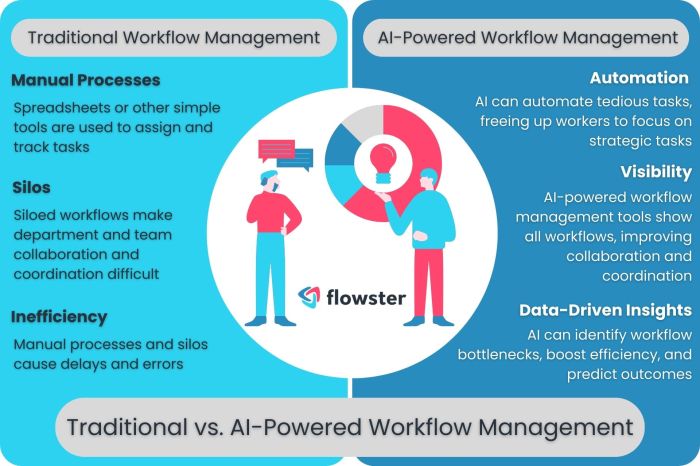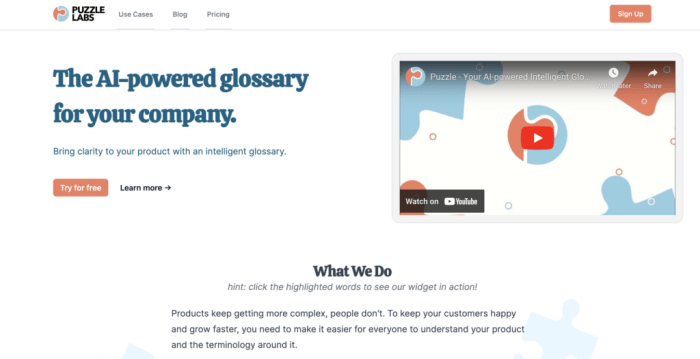AI tools for remote workforce are revolutionizing the way teams operate, breaking down barriers of communication and collaboration in a virtual environment. As remote work becomes the norm, the significance of leveraging AI technologies to boost productivity, streamline processes, and enhance team cohesion cannot be overstated. From facilitating seamless communication to optimizing project management and ensuring compliance, these tools are essential in navigating the challenges of remote work.
By integrating AI into daily operations, remote teams can benefit from improved communication platforms, enhanced project tracking, and effective time management solutions. The diverse landscape of AI tools offers unique functionalities that cater to the varying needs of remote workers, paving the way for innovative workflows and enriched employee engagement.
Overview of AI Tools for Remote Workforce
The landscape of remote work has evolved dramatically, and AI tools play a pivotal role in enhancing the productivity of remote teams. As organizations adapt to a more distributed workforce, these innovative tools streamline workflows, foster collaboration, and optimize task management. The integration of AI into daily operations can significantly improve efficiency, enabling remote workers to focus on what truly matters.
AI tools can be categorized into various segments, each serving unique functions tailored for a remote work environment. These categories include communication tools, project management software, productivity and time management applications, security and compliance solutions, employee engagement platforms, and training and development resources. By leveraging AI technology, organizations can derive substantial benefits, such as increased operational efficiency, better resource allocation, and enhanced employee satisfaction.
Communication AI Tools

AI-driven communication platforms are essential for facilitating collaboration among remote teams. Tools like Slack and Microsoft Teams utilize AI to enhance messaging, file sharing, and real-time collaboration. These platforms often come equipped with features such as natural language processing, helping teams communicate more effectively and efficiently.
AI chatbots are another vital component of communication tools, designed to assist remote employees by answering queries, scheduling meetings, and providing instant support. The implementation of AI chatbots can dramatically reduce response times and improve the overall communication flow. Furthermore, virtual meeting tools benefit from AI enhancements, which can automate transcription, provide real-time language translation, and optimize video quality, ensuring seamless interactions during remote meetings.
Project Management AI Tools
AI tools designed for project management are pivotal in assisting remote teams with task tracking and collaboration. Applications like Asana and Trello incorporate AI features to help prioritize tasks, set deadlines, and allocate resources efficiently. These tools often integrate machine learning algorithms to analyze project performance, providing insights that aid in decision-making.
When comparing different AI project management software options, it’s crucial to evaluate their unique functionalities. Features such as Gantt charts, task automation, and integration with other tools should be considered. A comprehensive list of desirable features in AI project management tools includes:
- Real-time collaboration and updates
- Automated task assignments
- Integration capabilities with other applications
- Reporting and analytics tools
- Customizable workflows
Productivity and Time Management AI Tools

AI tools aimed at monitoring productivity and managing time for remote workers are invaluable. Applications like Clockify and RescueTime analyze work patterns and provide feedback on time usage, enabling employees to identify areas for improvement. These tools harness AI analytics to deliver insights into productivity trends, allowing teams to adjust their workflows accordingly.
To effectively utilize AI analytics, organizations can implement techniques such as setting specific productivity metrics and regularly reviewing performance data. A comparison of popular time management AI applications reveals unique functionalities that cater to remote teams, including features such as:
- Automatic time tracking
- Workload balance suggestions
- Integrated task management
- Customizable alerts for productivity milestones
Security and Compliance AI Tools

Security is a critical concern for remote workforce operations, and AI tools significantly enhance security measures. Solutions like CrowdStrike and Symantec utilize AI to identify threats, automate responses, and ensure data integrity. By employing these AI-driven security tools, organizations can proactively protect sensitive information.
AI can also assist remote teams in adhering to compliance frameworks. Tools equipped with AI capabilities can monitor activities, enforce policies, and generate compliance reports, easing the burden on remote teams. Best practices for implementing AI tools to safeguard sensitive information include:
- Regular security audits and assessments
- Utilizing encryption for data transmission
- Establishing clear protocols for data access
Employee Engagement AI Tools, AI tools for remote workforce
AI tools dedicated to fostering employee engagement and morale among remote teams are increasingly important. Platforms like Officevibe and Culture Amp leverage AI to analyze employee feedback and engagement levels, offering insights into workforce satisfaction. These tools can help organizations create a more positive and productive remote work environment.
AI-driven surveys and feedback mechanisms play a crucial role in assessing employee sentiment. By utilizing these insights, organizations can tailor engagement strategies to better suit the needs of remote employees. A guide to utilizing AI for personalized employee engagement strategies includes:
- Implementing regular pulse surveys
- Using AI to analyze feedback trends
- Creating targeted engagement initiatives based on data
Training and Development AI Tools
AI tools for training and upskilling remote employees have become essential in a rapidly changing work environment. Platforms like Coursera and LinkedIn Learning use AI to recommend personalized learning paths based on individual needs and career aspirations. These tailored experiences enhance employee skills and contribute to overall workforce development.
Creating personalized learning experiences using AI technologies involves analyzing employee performance data and aligning training programs with identified skill gaps. Additionally, AI can streamline onboarding processes for new remote hires by automating administrative tasks and facilitating access to essential resources. By employing these AI-driven strategies, organizations can ensure that new hires are effectively integrated into the team.
Final Thoughts
In conclusion, the integration of AI tools into the remote workforce landscape is not just a trend but a vital step toward creating efficient and engaged teams. By harnessing the power of AI, organizations can ensure that their remote operations are secure, productive, and conducive to employee satisfaction. As we continue to adapt to the dynamics of remote work, embracing these technologies will undoubtedly lead to a more resilient and agile workforce.